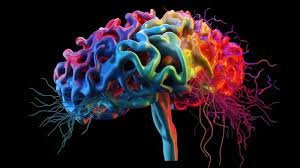
In Honor of Veterans Day, LZM Studio and Small Victories Foundation Offer Drawing Lessons for Veterans
This Veterans Day, help spread the word about an incredible scholarship opportunity for veterans! Through my partnership with Small Victories, I’m offering drawing lessons to students recovering from traumatic brain injuries. Small Victories, founded by Derrick and Cindy Wright, is an inspiring organization that empowers individuals like Derrick, a veteran who sustained a brain injury while serving in Iraq, to find healing and purpose through art.
Art can be a powerful tool for recovery, fostering community, and achieving meaningful milestones. I’m honored to contribute to this mission and invite you to join us in supporting their work. Learn more about Derrick’s journey, explore the scholarship opportunities at LZM Studio, and consider donating to help veterans rediscover hope and purpose through creativity.
Share this with the veterans in your life and thank them for their service!

One Small Reason You Want Me to Teach Your Kids How to Draw
My personalized drawing lessons go beyond art, creating a space where kids grow creatively and personally. I’m honored to be part of my students' “local family,” guiding them as they achieve milestones, like Phoebe’s conservation patch for the Austin Zoo.
Each week, I become more than a teacher—I’m a trusted confidante and ally, fostering creativity and building meaningful connections. From celebrating achievements to sharing life lessons, I’m here to inspire young minds while supporting both kids and parents. Choose drawing lessons where your child can learn, grow, and thrive!

Building Patience: Quality Drawings Take Time
Drawing, much like constructing a house, is a layered process that requires time, patience, and dedication. Quality artwork isn't about instant gratification—it’s about embracing the journey. Masterpieces, such as Karmel Timmons' and Larassa Kabel's intricate horse drawings, can take weeks or even months to complete.
Drawing is an ancient craft—a hands-on practice that rewards perseverance. Like Tim Jenison's painstaking recreation in Tim's Vermeer, which took 180 days, true artistry demands commitment.
Through deliberate practice, students like Bern and Ananda have transformed their skills, one layer at a time. Celebrate the small steps, because every effort builds toward a masterpiece. Discover how patience in drawing can yield lasting rewards.

Digital Kids: Computer-Aided Drawing is Good Drawing Practice
Encouraging kids to unplug is important, but guiding them toward meaningful tech use is just as valuable! Digital drawing, like Ananda's work with Corel programs, combines creativity with real-world skill-building. While traditional tools like colored pencils teach tactile skills and planning, digital mediums offer layers, "undo" options, and career-ready experiences.
Ananda's "Phoenix Fox" speed-drawing project, learned at The Contemporary Austin Art School, highlights how digital tools can expand artistic expression. If your kids are using computers, why not connect with them through creative activities like digital art?

Minecraft Can Be Good for Your Kid's Drawing Skills
While many parents seek ways to limit screen time, Minecraft can actually help kids develop valuable drawing and design skills. The game’s 3D world-building encourages kids to think in perspective, much like learning two- and three-point perspective in drawing.
One of my students, Carter, used Minecraft to model a modern building after practicing perspective drawing in class. This exercise helped him visualize space, structure, and flow—skills that directly enhance his traditional drawing abilities.
In short, Minecraft fosters creativity, spatial awareness, and problem-solving, all of which contribute to improving drawing skills. Let your kids play, and encourage them to draw their Minecraft creations!

Does Your Kid Dream of Architecture? Drawing Lessons Are a Good Place to Begin!
For kids interested in architecture, perspective drawing is a great starting point. Recently, I introduced my student Carter, age 11, to the world of architecture through perspective lessons. His passion for modern architecture grew as he took on complex house designs.
To deepen his learning, I arranged a meeting with local architect Charles Di Piazza, AIA, at a construction site in Austin. Carter learned about site analysis, design sketches, and the architectural process. This hands-on experience connected his drawing lessons to real-world architecture, inspiring him even more.
This rewarding opportunity highlights the power of combining art and architecture to inspire the next generation of architects.

Small Victories: Drawing to Heal Traumatic Brain Injuries
I am deeply honored to partner with Small Victories in offering drawing lessons for students recovering from traumatic brain injuries. Founded by Cindy and Derrick Wright, Small Victories provides invaluable support to those on their healing journey. Derrick, a veteran who sustained a traumatic brain injury while serving in Iraq, found new purpose and healing through art. His journey, along with Cindy’s unwavering positivity, inspired the creation of Small Victories to help others find purpose through creativity.
By offering drawing lessons, I’m excited to work alongside this incredible organization and assist clients in their recovery process. Learn more about the impact of Small Victories and join us in supporting this cause by donating to help others discover the power of art in healing

Making Art Is Good for Your Brain
Making art isn’t just a creative outlet—it’s a brain booster! Recent studies are now backing up what many of us have known intuitively for years: creating art enhances brain function. Whether you're a youngster, an older adult, or somewhere in between, the process of making art has positive cognitive effects. A study focused on newly retired individuals (ages 62-70) found that engaging in art-making can delay or even reverse age-related cognitive decline. In contrast, simply learning about art through appreciation showed no such benefits. The key lies in the active "doing" of art, which engages your hands, eyes, and brain in complex ways. This form of global thinking helps improve cognitive function by combining small details with the big picture. Don't just read about it—get your hands in the paint, and boost your brain!
